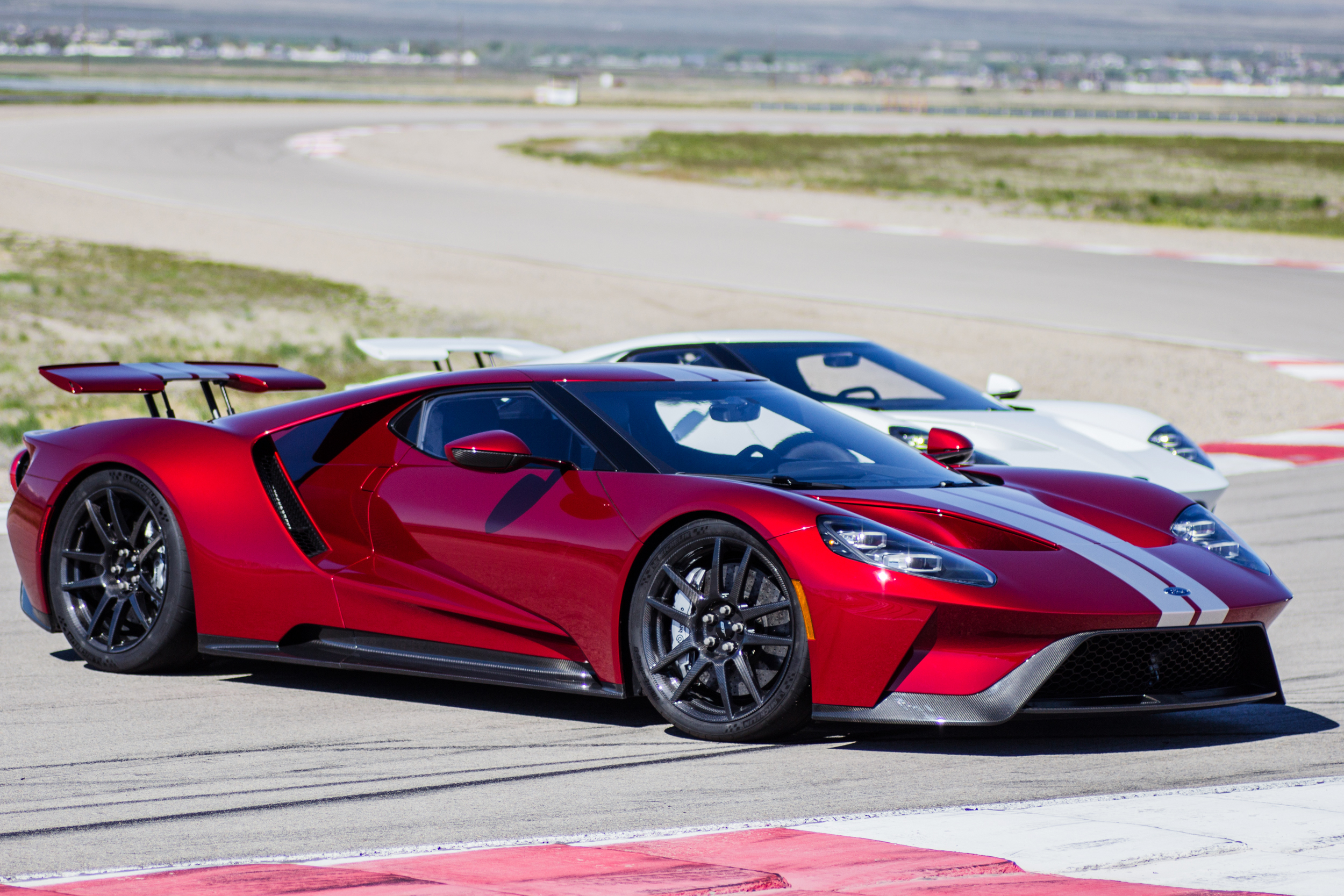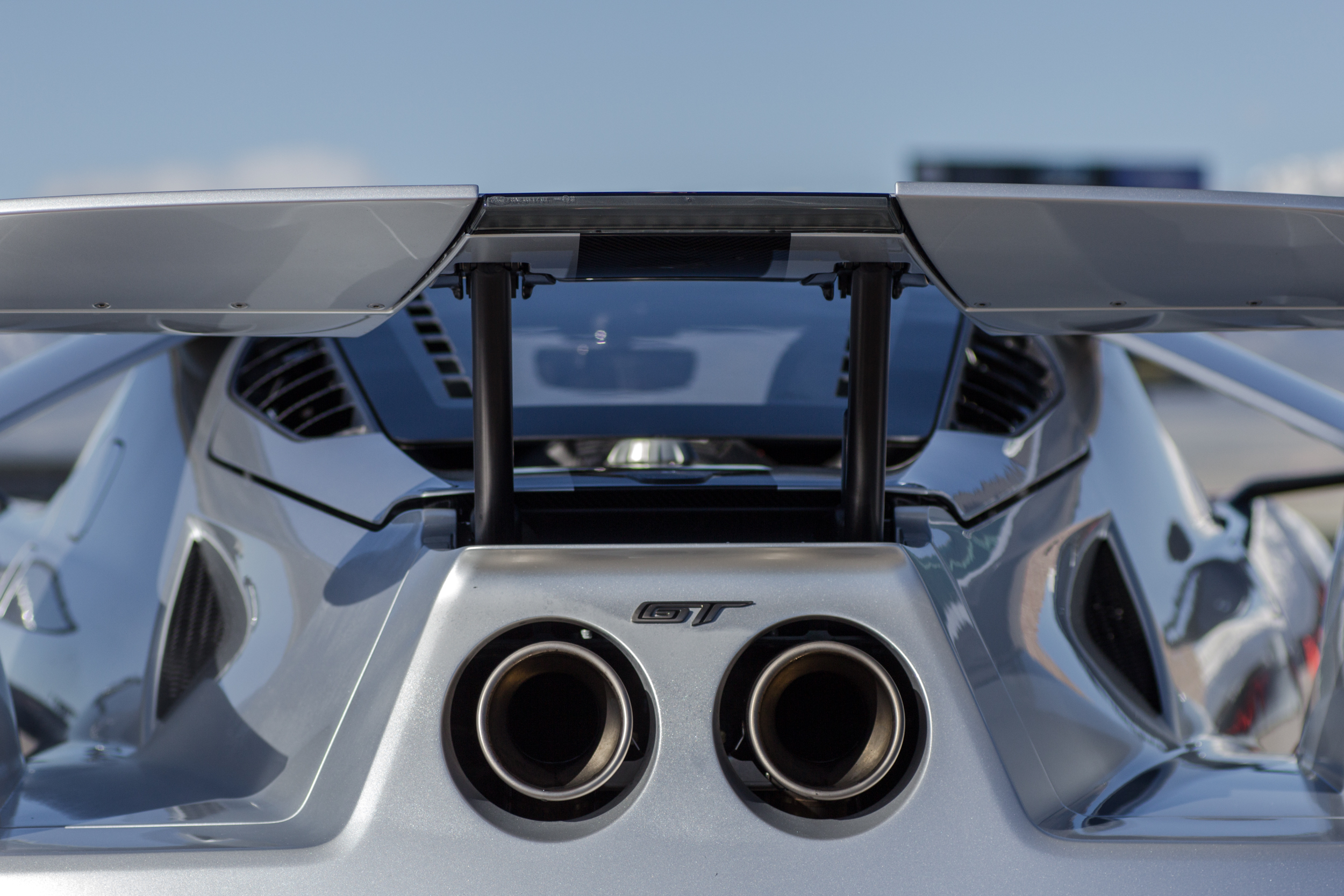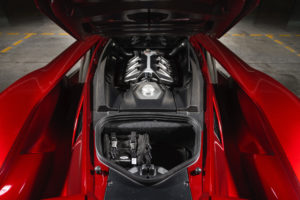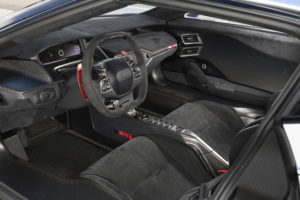FIRST DRIVE: 2017 Ford GT is a Glorious Street Car for Stigs

Ford’s pride and joy takes its Le Mans-winning credentials to the road.
From the moment Ford announced its intent to win the 24 Hours of Le Mans on the 50th anniversary of the absolutely iconic GT40’s first triumph there, the company rigidly maintained that both the production-bound Ford GT and its racecar counterpart underwent concurrent development. While that’s fantastic in theory, it leads to phrases like “street-legal racecar,” which tend to get lost in the hyperbolic static of modern marketing. Still, from guys whose last name adorns the blue oval, to the people responsible for designing the car, literally every employee with whom I’ve spoken about the project stays remarkably true to the assertion that the GT is a street-legal racecar.
So what is it? Is the 2017 Ford GT truly a racecar that you can drive on the street? Is it an exotic supercar that happens to boast a Le Mans-winning racecar among its close relatives? I drove it on both public roads and on track at Utah Motorsports Park to find out. Happily, the answer is as obvious as Ford made it out to be: this truly is a factory-produced racecar-like almost nothing else on the market.
2017 Ford GT Highs and Lows
Highs:
- The 647hp, 550 lb-ft EcoBoost V6 is a proven, reliable, and user-friendly winner
- Active aerodynamics and a trick suspension combine for truly impressive performance
- Sound is raw and uncompromising
- Those timelessly sexy lines
Lows:
- Air conditioning isn’t the best
- Sound is raw and uncompromising
- Always the center of attention on public roads
- Current black market kidney prices won’t get you close

Performance comes first. Always.
On the road, the GT spends virtually every minute reminding you that you’re driving a Ford GT. There are a dozen buttons on the steering wheel, including one for each turn signal. Everyone stares, even more than your typical exotic car. It even has that uniquely racecar-like ability to convey the exact size of each and every stone kicked up from the very soft Michelin Pilot Sport Cup 2 tires, based on nothing more than the fierceness of the sound as they smack into the insulation-less carbon-fiber floor. The car does have air conditioning — just — and it has a navigation system. Hell, it even has a radio. None of those are things any sane person is going to care about, though. When driving a car such as this, you’re wasting the experience if you so much as think about a radio.

The Ford GT’s beauty takes many forms.
Rightly considered motorsport royalty, the GT40 was the centerpiece of the legendary Ford vs. Ferrari feud in the 1960s. The very, very few road-going GT40s Ford produced back then weren’t simply based on the racecar, they were the racecar, with a few minor tweaks. Flash forward to the present day, and Ford’s new GT oozes virtually every passion-invoking trait a car can have. Sexy lines scream speed from literally any angle. Engineering mastery blends seamlessly with design. Even the visual cues aren’t derivative of the original, despite conveying the car’s heritage to even the most car-illiterate observers.
Perhaps the most impressive part, though, is that this is no skin job. The true beauty of the Ford GT lies beneath that sleek and sultry carbon fiber shell.

This is literally a production racecar you can drive to work.
If you want to buy a Ford GT to go racing wheel to wheel, you literally do not need anything beyond a competition license and a wallet. An FIA-spec roll cage is built into the chassis, meaning no major structural changes are necessary before competition. The seats are positioned precisely so that your head isn’t going to hit anything solid, like, you know, steel bars. As a result, you instead adjust the pedals: a small price to pay for the result. That’s quite a feat in and of itself. The Dodge Demon doesn’t come with a cage because doing so would put those steel bars nearer to the driver’s head: a street car faux pas that would give Dodge’s lawyers a collective coronary. Ditto, Porsche’s GT3 RS, which only comes with half a cage, only as an option, and only outside of the U.S.
This is about far more than a roll cage, though. The trick suspension up front is one of the most innovative designs on a road car since the Porsche 959. The inboard damper setup does well to control the motion of the springs on the street. The ride is, well, it’s rough, but you don’t need to slow to five mph over railroad crossings.

Perhaps unsurprisingly, track mode is where the magic happens. Not only does the car lower by 50mm, it literally clamps down on the spring, taking it out of the equation and leaving only a torsion bar, linked to nearly infinitely adjustable, state-of-the-art dampers. It might sound complex, but it’s really quite stunning in its simplicity, and serves its purpose quite well.
Once you turn the dial on the steering wheel to T, the driving experience is simply unlike a regular production car, however exotic. Provided you have the driving chops, it’s a ready and willing dance partner. It behaves like a bonafide racecar, with nearly undetectable amounts of unwanted motion in the chassis, and the most responsive handling of any car that doesn’t require a lifetime of commitment to motorsport to drive.

The entire car is in harmony with itself, and its past.
Every inch of the car is an exercise in restraint, the embodiment of the less is more mantra. Yes, the GT pays visual homage to the original GT40, but never to the extent that it impacts the car’s performance. Function is a vital component of every shape, which is why the car’s signature flying buttresses exist: they house the piping for the intercoolers, strengthen the chassis, and help direct airflow through to the rear wing. Whereas the 2005 Ford GT was a retro-design masterpiece, this new beast is truly forward-facing. Every important part, shape, and decision that went into the car really was formed with the intent of making it a winner on a race track — just like its GT40 grandfather.
CHECK OUT: What the forum says about the new Ford GT.
Ultimately, this is all a bit academic for more reasons than the half-million dollar price tag. Ford’s making just 250 GTs a year for the next four years, and the 2017 batch was claimed ages ago. Still, if you’re shopping around for the next poster to hang on your wall, and you want a semi-luxurious supercar that happens to have a sibling racing at tracks around the world, you can stick with your McLarens, Lamborghinis and Ferraris. If, however, you want a poster car that, save for some minor tweaking, is the car competing, this is it.




















